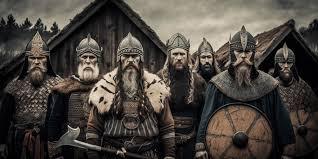#contemporary german pop
Explore tagged Tumblr posts
Text

Sommer II (Summer II), Werner Berges, 1972
Screenprint on paper 19 ¾ x 16 ½ in. (50.2 x 41.9 cm)
#art#werner berges#modern art#pop art#1970s#contemporary art#20th century#20th century art#summer#screenprint#print#works on paper#german
18 notes
·
View notes
Text

Eberhard Havekost (German 1967-2019), Schminke 2 (Make Up), 2006. Oil on canvas, 40 x 50 cm. | 15 3/4 x 19 5/7 in.
#art#artwork#modern art#contemporary art#modern artwork#contemporary artwork#21st century art#21st century modern art#21st century contemporary art#German art#modern German art#contemporary German art#German artist#German painter#pop art#popular culture#popular culture in art#rock#rock legend#Kiss#face paint#make up
2 notes
·
View notes
Text
Limahl - The NeverEnding Story 1984
"The NeverEnding Story" is the title song from the English version of the 1984 film The NeverEnding Story. It was produced and composed by Italian musician Giorgio Moroder and performed by English pop singer Limahl. He released two versions of the song, one in English and one in French. The English version featured vocals by Beth Andersen, and the French version, "L'Histoire Sans Fin", featured vocals by Ann Calvert.
It was a success in many countries, reaching #1 in both Norway and Sweden, #2 in Austria, West Germany and Italy, #4 in the UK, #6 in Australia and on the US Billboard Adult Contemporary chart. The song was composed by Giorgio Moroder with lyrics by Keith Forsey, though it (and other electronic pop elements of the soundtrack) is not present in the German version of the film, which features Klaus Doldinger's orchestral score exclusively.
In the final episode of the third season of Stranger Things, set in 1985, "The NeverEnding Story" is sung by Dustin and his long-distance girlfriend Suzie as a way to reconnect after not seeing each other for some time. Following the season's release on July 4, 2019, interest in "The NeverEnding Story" surged; viewership of the original music video had increased by 800% within a few days according to YouTube (not linked to here), while Spotify reported an 825% increase in stream requests for the song.
It recieved a total of 68,2% yes votes!
youtube
1K notes
·
View notes
Text
If you've ever taken an interest in FFXIV localisation differences you've probably come across the claim that the English and Japanese scripts are written at the same time, so you can't point to either one as the original. I've been sifting through old threads to find a source on that and it's looking like this claim only started popping up after this interview with the localisation teams, probably because of this bit:
●Also, are there ever situations where the FFXIV localization team gives ideas to developers instead of localizing game content that’s already been created? David (German): The English team is actively involved in naming of skills and location names, etc. and the wider localization team is invited to provide ideas and concepts for new creatures from their various cultures. Then there are situations where we do culture checks and flag potential issues in the story to avoid misunderstandings or to cater to contemporary cultural developments. Kate (Lore, English): I do often provide ideas for names we could use for in-game terms, bosses, attacks, NPCs, places, titles, and things like that based on parameters from the team. I’m not sure how much people actually notice that stuff, but I’m always happy when my ideas get used. Like, “I’m helping!! Yay!”
Evidently, "the English team is actively involved in the naming of skills, items, locations, etc" got word-of-mouthed into "the English team is actively involved in writing the game's story" when if the English team was really involved on a story level it would've surely been mentioned here. The actual story and dialogue are written in Japanese first and then translated to the other languages and you can very much point to the Japanese text as the original to determine how effectively each language preserves meaning and intent.
126 notes
·
View notes
Text
Germanic Paganism Resource Masterlist
Notes: - Updates will be beyond infrequent. - Feel free to pop into my ask box requesting resource recommendations at any moment. - Resources do not reflect my personal beliefs or practice. I may include otherwise great resources that include theories and ideologies I do not support (such as the 'sign of the Hammer'), because I make extensive use of cross-referencing, reflection, etc to determine everything I incorporate into my craft. - I will never consciously add resources written by (Neo-)Nazis and the like. If you spot them, feel free to let me know. - You may notice there is a seemingly disproportionate amount of sources also or primarily talking about Scandinavia and Iceland, and even some primarily covering England. This is because continental Germanic paganism has only barely survived the ravages of time, and one can only learn about it if they supplement their knowledge with the more complete pictures of Anglo-Saxon paganism and Norse paganism.
Legend: [No language identifier means the source is English.] [D] - The resource is written (primarily) in Dutch. [G] - The resource is written (primarily) in German. [ON] - The resource is written (primarily) in Old Norse. [OD] - The resource is written (primarily) in Old Dutch. [OG] - The resource is written (primarily) in Old High German. [L] - The resource is written (primarily) in Latin. [F] - The resource is written (primarily) in French. * - I have not read the resource in its entirety. ** - Read with caution. !! - There is more of the resource available/this is one part of multiple.
Historic Texts and References
Tacitus' Agricola and Germania
Tacitus' Annals
The Prose Edda
The Poetic Edda
The First Nine Books of the Danish History of Saxo Grammaticus
Contemporary Books, Essays, Other Media
Myths and symbols in pagan Europe : early Scandinavian and Celtic religions - H.R. Ellis Davidson
Kleinere Altniederdeutsche Denkmälen - Heyne [G]*
Religion and Philosophy in Germany : a Fragment - Heine *
Deutsche Volkskunde - Adolf Bach [G]*
Teutonic Mythology - Grimm
Swedish Legends and Folk Tales - John Lindow
Scandinavian Mythology : an Annotated Bibliography - John Lindow *
Trolls : an Unnatural History - John Lindow
Myths of the Norsemen from the Eddas and Sagas - H.A. Guerber
Northern mythology : comprising the principal popular traditions and superstitions of Scandinavia, North Germany, and The Netherlands - Benjamin Thorpe | VOL 1, VOL 2, VOL 3
From Myth to Fiction : the Saga of Hadingus - Georges Dumézil *
The Stakes of the Warrior - Georges Dumézil **
Gods of the Ancient Norsemen - Georges Dumézil **
Zum Tamfana-Rätsel - Edmund Weber [G]*
De Tijdstippen van de Cultische Jaarfeesten - Boppo Grimmsma [D]**
Nederlansche Volksoverleveringen en Godenleer - Van den Bergh [D, OD]*
Tales and Legends of Tyrol *
Germanic Spirituality - Bil Linzie
Handwörterbuch des Deutschen Auberglaubens - Baechtold-Staubl, Hoffman-Krayer
Goden van de Lage Landen - Gunivortus Goos [D]**
Runic and Heroic Poems of the Old Teutonic Peoples - Dickins *
Gods and Myths of Northern Europe - H.R. Ellis Davidson
Old Norse - Icelandic Literature : a Critical Guide - John Lindow
Vikings : a Very Short Introduction - Richards *
Norse Mythology : a Guide to the Gods, Heroes, Rituals and Beliefs - John Lindow
Antwoord op de Vraag, door het Zeeuwse Genootschap de Wetenschappen - te Water [D]*
Verhandelingen over het Westland, ter opheldering der Loo-en, Woerden en Hoven, benevens de natuurdienst der Batavieren en Friezen - Buddingh [D]*
De Goden der Germanen - de Vries [D]*
Norse Revival: Transformations of Germanic Neopaganism - Stefanie von Schnurbein (in the series Studies in Critical Research on Religion which I highly recommend)
Digital Libraries, Dictionaries and the Like
Digitale Bibliotheek voor Nederlandse Letteren [D]*
Digitised Collection of Historic Sources of the WWU in Münster [G, D, OD, OG]*
Oudnederlands Woordenboek [D, OD]*
Ons volksleven : tijdschrift voor taal-, volks- en oudheidkunde. Jaargang 2-12 [D]*
Het Rad - Digitale Bibliotheek voor Germaans Heidendom, Runen, Seidr [D]*
Volkskunde (search results on Delpher) [D]*
Goden van Eigen Bodem - Digitale bibliotheek voor heidens erfgoed van de lage landen [D]*
Godinnen van Nederland en België [D]**!!
Forgotten Gods - Reginheim **
The Rune Poems *
Kronieken van de Westhoek (Flemish Folk History) [D]*
Brabantse Folklore, bulletin van de provinciale dienst voor geschiedkundige en folkloristische opzoekingen [D]*
Project Gutenberg has a wealth of resources about pre-christian Germanic religion*
Mimisbrunnr.info has a wealth of information including starter guides.
Author Recommendations
J.R.W. Sinninghe [D]
John Lindow
Benjamin Thorpe
H.R. Ellis Davidson
The Grimm Brothers
J. Haver [D]
To be continued.
69 notes
·
View notes
Video
youtube
Julia Hülsmann Trio: Kiss From A Rose
The Julia Hülsmann Trio, with their interpretation of “Kiss From A Rose” on the album "The End Of A Summer" (2008), delivers an elegant and deeply introspective reimagining of Seal's famous song. This German trio, led by pianist Julia Hülsmann, transforms an iconic pop piece into a delicate contemporary jazz composition, where each note seems carefully considered. From the very first chord, the version exudes a minimalist and poetic atmosphere, moving away from the original's drama and embracing a more subtle and reflective language.
Hülsmann's piano leads the interpretation with a restrained and lyrical approach, where the original melody gently emerges between pauses and silences. Her execution is precise, almost ethereal, allowing each phrase to breathe and develop organically. Marc Muellbauer's double bass provides a solid yet fluid foundation, with melodic lines that engage in a perfect dialogue with the piano. Meanwhile, Heinrich Köbberling's drumming uses light textures and controlled dynamics, avoiding unnecessary prominence and enriching the contemplative nature of the piece.
What is fascinating about this interpretation is the way the trio deconstructs the original structure of the song, stripping it of its more ornamental elements and rebuilding it through a minimalist jazz lens. The melody, recognizable yet subtle, dissolves into a sea of soft harmonies and introspective progressions that invite reflection. Hülsmann demonstrates her ability to find depth and space in a seemingly simple song, showcasing a special sensitivity for restrained lyricism.
14 notes
·
View notes
Note
Hello I have a bit of a weird question here , well , do you think modern women or modern women we consider beautiful in our time now would be considered beautiful in the medieval times ? Let’s say conventionally attractive women of this time such as Tyla , Madison beer , Sabrina carpenter , women we agree all that they are beautiful, do you think they would be this appreciated in let’s say medieval Europe or the crusader kingdoms ? Thank you very much for reading and answering 💗
Hello, anon! Sorry for the extremely late reply 🙈
Ngl, I had to google these people because I had no idea who they are. So in case any of my readers are like me and lack a basic understanding of recent pop culture, here they are for reference:



All in all, medieval ideas of beauty were actually not very different from our present ones. Looking at descriptions of beautiful women in medieval European literature, we see that, in general, writers prized features that are symmetrical and signal youth and health - which also pretty much sums up our 21st-century understanding of feminine beauty. So it is likely that those we as a society consider beautiful would have elicited a similar reaction from Baldwin and his contemporaries. (Though I imagine they would have had a word or five to say about the future's skimpy clothing, and not only for reasons of modesty. Like, where are the swathes and swathes of luxurious fabric? Are we too poor to afford it?)
Of course, medieval and modern ideals differ in some particulars. As you asked specifically about medieval Europe and since the crusader kingdoms largely followed the customs & culture of the French court: Yes - to get the obvious out of the way - there was an emphasis on the whiteness of a woman's skin at the time. Which is here not only an issue of race (a whole 'nother can of worms to open) but also of class, as lighter skin would have been regarded as a signifier that the woman was (or looked like) a member of the nobility, who did not have to do physical labour in the fields etc. where the sun would have been beating down on her all day.
That said, there are examples of dark-skinned characters in medieval European texts who are described as beautiful, such as Queen Belacane in the early-13th-century German chivalric romance Parzival. However, I would be denying history if I didn't acknowledge that even these characters, sometimes subtly, sometimes considerably less so, tend to be presented as an Other. In Wolfram's Parzival, for example, Belacane's people are "liute vinster sô diu naht" ("people dark as the night", Parzival 17,24). She is thus deliberately constructed as the opposite of the European ideal of the courtly lady (Mieger 191), who tends to be described as things like "liehters denne der tac" and "touwegen rôsen" ("lighter than the day" and like a "dewy rose", Parzival 24,6 and 24,10).
I haven't found any specific research materials on beauty standards in the crusader states, but I'd imagine this might have been less of an issue there than in the more remote parts of Europe, given that the cultural melting pot of the Levant would have exposed its inhabitants on a daily basis to different ideas and ideals of beauty. First and foremost, in any case, would have come considerations of religion - a beautiful "heathen" would have had to be very appealing and otherwise virtuous indeed for a European writer to apply courtly adjectives to her, whereas a Christian woman, no matter the colour of her skin, would have been regarded a little more favourably (though again likely exoticised as an Other if she wasn't white).
What did European courtly culture consider appealing then, other than ominous "dewy roses"? As far as text sources go, medieval society liked women to have a slender figure, healthy but not too thin, with a small but full mouth, a well-formed, not too prominent nose, rather small feet and hands, a long elegant neck, and white and even teeth. Mathieu de Vendôme’s Ars versificatoria (late-twelfth century) uses the example of Helen of Troy as the epitome of beauty. His Helen has golden and free-flowing hair, a “Milky Way-white” forehead, black and separated eyebrows “like arches”, sparkling eyes “like stars”, rosy cheeks, a straight nose which is neither too flat or too large, rosy and delicate lips, straight teeth that are “whiter than ivory”, and firm, small breasts (da Soller 98).
Another interesting example is offered in a thirteenth-century Castilian translation of an Arabic folk story, La historia de la doncella Teodor: “the beautiful woman has eighteen signs: three long, three short, three small, three white, three black, and three red. three long: torso, neck, and fingers; three white: body, teeth, and white of the eyes; three black: hair, eyes, and eyebrows; three red: cheeks, lips, and gums; three small: mouth, nose, and feet; three wide: hips, shoulders, and forehead” (101).
So, going back to the three women you mentioned, I'd say they fit the medieval ideal pretty well. Though we prefer somewhat more prominent curves and probably slightly more striking facial features nowadays than our ancestors (as well as fortunately moving away from prizing only light skin), I think we do see here that the difference between medieval and modern isn't actually that large. There's still an undercurrent of kalokagathia in our society's thinking, i.e. the idea that outward beauty signals inner virtue (think, for instance, of the fact that our fictional villains tend to be conventionally unattractive as opposed to the usually attractive good guys).
All things considered though, I shall end this rambling lecture by saying that, ultimately, tastes differ, today as well as in the Middle Ages. It is understandable that you might wish to appeal to, say, your favourite medieval king, but after expounding at length on what's supposedly beautiful or not, let me remind you: As people (and especially women), we do not exist to be ogled and judged by others - you are valuable regardless of whether a particular person considers you beautiful or not. 💛
Sources:
da Soller, Claudio. "Beauty, Evolution, and Medieval Literature." Philosophy and Literature, vol. 34, 2010, pp. 95–111.
Mieger, Hannah. "Königin of Color – Belacane in Wolframs von Eschenbach Parzival als intersektionale Figur." Intersektionalität und erzählte Welten: literaturwissenschaftliche und literaturdidaktische Perspektiven, edited by Verónica Abrego, Ina Henke, Magdalena Kißling, Christina Lammer, Maria-Theresia Leuker, 2023, pp. 187-201.
#asks#kingdom of heaven 2005#snippets of actual history#medieval literature#yes the lit major rears its head again#also i swear i am not dead
30 notes
·
View notes
Text








Gerhard Richter was born in 1932 in Dresden, Germany, during the rise of the National Socialist German Workers' Party, or the Nazi Third Reich. Notably, some of Richter's relatives were directly involved in the Nazi movement, namely his father, a schoolteacher, and an uncle. Richter's mother, the daughter of a concert pianist, encouraged her son's early talent for draftsmanship. In 1948, at the age of 16, Richter quit his formal education and took up an apprenticeship as a set painter for the theater. The wake of war proved traumatic for Richter: two of his uncles had been killed in action, and his father had lost his employment. This family turmoil, coupled with the artist's early artistic training under postwar communist-driven ideology, eventually led Richter to seek his creative inspiration in nature over any political or religious affairs or philosophies.
Beginning in 1951, Richter studied at the Kunstakademie, Dresden, where he painted murals and political banners commissioned by state-owned businesses. During this time, the East German communist regime imposed a Social Realist style on all practicing artists; this policy effectively turned art to the service of political propaganda. In keeping with this development, the government banned exhibitions of American Pop art and Fluxus. These circumstances severely limited Richter's fledgling artistic style, as he was instructed to paint only landscapes in a manner heavily informed by pastoral romanticism.
Richter married Marianne Eufinger in 1957, and the couple celebrated the birth of a daughter, Betty, in 1966. Two years later, during a visit to West Germany in 1959, Richter discovered the work of contemporary artists Jackson Pollock and Lucio Fontana. Pollock's uninhibited splashes of color across canvas had a profound impact on Richter, provoking him to reflect on his own artistic ideology. Indeed, Richter began to question how a realist style did not seem to capture the energy, sense of truth, and spirit of artistic liberation that he observed in the abstract work of his American and European contemporaries. Supposedly "realistic", his work seemed to fail to reflect the underlying, tumultuous nature of reality itself.
In 1961, just prior to the government's official completion of the Berlin Wall, Richter moved to Düsseldorf. Once again enrolling at the local Kunstakademie, Richter intended to work in a more uninhibited, avant-garde manner; in the process of rethinking his approach to art making, he purposely destroyed many of his early paintings from the 1950s and the 1960s.
Continue reading https://www.theartstory.org/artist/richter-gerhard/
61 notes
·
View notes
Note
as i research into stuff for my jewish faust meta, i find there's a lot to unpack with mephistopheles originally being a demon from german folklore in the main legend. (in my retelling, we're not all that sure what mephi is to begin with, an allusion to satan/hasatan from "the book of job" simply translating to "the adversary" from hebrew. we just know that he sure as hell isn't human :])
in goethe's version, he comes much more off as a hasatan - the adversary - type from "the book of job". i think it's something about his very cavalier "hey, g-d, if i managed to corrupt this heinrich faust guy would that be fucked up or what :D" energy. marlowe's take on mephi bears similarities to lucifer with all of the internal conflict and insight we get into his character, though we don't get that same insight with goethe's. i love goethe's mephistopheles (as you can tell), but i think that a lot about his character motivations come off as a lot more ambiguous and we don't really get as much insight into who he is.
maybe this facet of how mephi's portrayed deserves an entire meta or analysis post of its own, though i find that the figures of satan and lucifer in more contemporary portrayals of the devil archetype tend to overlap as the same character. and maybe goethe was going for that, but i haven't really done much research into goethe's personal views on religion yet, nor have i read much of his other work.
Oh, Goethe's Mephistopheles is definitely a Job-like figure--that's one of the reasons I saw your Jewish Faust take and went "yeah, I could see that!" Goethe was not conventionally religious at all and may have been more of a deist or atheist, iirc--Faust uses Christian iconography for its conception of the universe but ascribes a lot of different meanings to it. There's a bit of a pop-cultural tendency to just read Mephistopheles as another name for "the devil" but if he's "the devil" he's the devil of another cosmography rather than just straight-up being the Christian devil, I think. More generally I do think it's important that Mephistopheles is inextricably tied to the Faust legend--it's worth noting that in the earliest references his name is spelled Mephostophiles, which basically parses to "not loving light" in Greek, but if you say it aloud with that pronunciation you can probably discern the wordplay, with Faust's name embedded in that of his demon. Insofar as he can be detached from it I think he's a very personal demon more so than the universal enemy of humanity implied by the idea of the Christian devil.
(As a side note, you should definitely check out Boito's opera Mefistofele, which is the only operatic version to include Mephistopheles' wager with Upstairs, although the divine voice is represented by the chorus because there's some stuff that's kinda hard to pull off in opera. The aria he has about how he just isn't having any fun these days because humans are corrupt enough without him is delightful--in general I think you'd like it, though, it's really good and all of the title character's arias serve incredible amounts of cunt. I'll finish this post and then I'll dig up a video of that first aria for you)
This ask also got me thinking, because you mention that Marlowe's Mephistopheles "bears similarities to Lucifer" -- I can't actually think of any tortured demon figures in literature that predate him. Dante's Satan doesn't even seem sapient, and devil characters in medieval drama tend to be slapstick figures. Of course the trope codifier for the tormented and even somewhat sympathetic Satan/Lucifer is Milton's Paradise Lost (although Milton is a devout Christian and consistently undermines the reader's sympathy) but Milton, despite his Puritanism, was a theater fan and draws on Marlowe's Mephistopheles for his characterization ("which way I fly is hell, myself am hell" definitely owes something to "why, this is hell, nor am I out of it"). Is Mephistopheles the trope codifier for putting the emo in demon? I think he might be!
(But it is, of course, important that in Doctor Faustus and its source material Lucifer is a separate character--when Faustus tries to strike his deal the first thing Mephistopheles says is basically "lemme ask my boss." Later on he shows up in person to put the fear of himself into Faustus. Since it's a play where the question of whether Faustus has free will hangs over the whole thing, it's important to Mephistopheles' function as a dramatic foil that he pretty manifestly does not. He may not even want to damn Faustus but that's immaterial, he's along for the ride anyway)
#doctor faustus#i need a dedicated goethe faust tag#good points all around#hot faust summer#mephistopheles#not quite mephistopheles monday tho#there are too many parentheticals in this reply
10 notes
·
View notes
Text
Something I've been finding quite irritating about the lack of media and culture literacy we're seeing - because of course the least educated people speak the loudest I fear - is that it's almost forced me to become an advocate for art I don't particularly enjoy. I don't enjoy modern or contemporary art. I don't like it, I think it's overblown, and I think a lot of modern/contemporary movements are juvenile, underdeveloped, and crude. I will also defend modern and contemporary art until I die from white tiktok women who claim that they could make better art from the comfort of their upper middle class couches because apparently despite pretending to be cultured by going to the museums where modern art is housed and proclaiming to their thousands of followers that they have done so - which was a choice, by the way, they could have really gone to any museum that served their one-note tastes all the better - they simply cannot be bothered to do any sort of research or reading on what the modern/contemporary art actually means, how it was created, the backgrounds of the artists who create it, etc., or even to read the plaque next to the piece while they stand next to it making their videos about how lifeless and uninteresting they find it.
There is a huge difference between disliking something because you understand it vs. because you don't. Please for the love of god, if you're going to loudly dislike something, please be the person who dislikes it because you understand it, and spare me the trouble of trying to shout just as loudly that, well, yes, Jackson Pollock was the worst, but please leave his genre alone because you sound like quite the toad when you speak.
Anyway I lied before, so here are some avant-garde movements/artists/pieces I really like/find very interesting to do some more research on for yourself.
the Die Brücke (The Bridge, German expressionist group)
Mexican Muralism (Mexican artistic movement post-revolution of 1910)
Brasilia (failed Brazilian capital city with some crazy architecture. Also utopianism in general)
Neo-Dadaism/Post-modernism (generally cheekier movement than the abstract expressionists who took their work and mission far too seriously)
Marjorie Strider (woman pop artist who critiqued a lot of sexism in the art world with her work. See also The Girlies Exhibition)
Liberation of Aunt Jemima and Betye Saar
One and Three Chairs and Conceptual Art (this is the one people like to complain the most about)
Yayoi Kusama (particularly Narcissus Garden. Very good stuff)
Felix Gonzales-Torres (if you don't already know him. Tell me you can look at Perfect Lovers without crying)
Rhythm 0 (imo the single most impactful, raw, gut-wrenching work Marina Abramovic ever produced. Performance art. Devastating)
Shigeko Kubota (Vagina Painting. almost a direct fuck-you to Pollock's macho vibe)
Earth Art (exactly what it sounds like - work that relies on nature. The Lightning Field is on my bucket list)
#my credentials are fuck you mind your buisness#jk i'm a senior at art school and art history is my special interest#i also wrote a research paper about queer cuban modern art so if that's interesting to u go check it#also if you go out there and learn PLEASE SEND ME ASKS WITH YOUR THOUGHTS#I WANT TO TALK TO PEOPLE WHO AREN'T GENUINELY WRETCHED ABOUT ART HISTORY#art history#rat rambles
12 notes
·
View notes
Text
youtube
Happy Birthday Derek William Dick born April 25th 1958 in Dalkeith.
Better known as Fish, lead singer with the group Marillion from 1981 to 1988, in his solo career he has explored contemporary pop and traditional folk and rock.
Marillion was initially formed as an instrumental band in 1979 by guitarist Steve Rothery, Fish was invited Fish to join as vocalist, and he assumed the frontman position beginning with their 1983 debut album, Script for a Jester's Tear. His strong Peter Gabriel-inspired vocals enforced critics' accusations that Marillion owed more than just a heavy debt to Genesis, but six more albums followed. Musical difficulties between Fish and the band caused him to leave after 1988's Thieving Magpie (La Gazza Ladra).
Fish has continued to release albums and singles over the past 30 years, most were given a good reception by critics but were not successful in commercial terms, In 2005, Fish won a Celebrity Music edition of The Weakest Link, beating Eggsy of Goldie Lookin Chain in the final round, sharing £18,750 for charity.
In May 2008, Fish's Planet Rock show Fish on Friday won the Silver award in the Music Broadcaster of the Year category at the UK Sony Radio Academy Awards 2008. In June 2008, at the New York Festivals Radio Broadcasting Awards, he and Gary Moore jointly received the Gold World Medal in the Regularly Scheduled Music Programme category for their respective shows on Planet Rock.
Fish was offered and accepted a part in the 1986 film Highlander (for which Marillion were also offered the soundtrack) but he eventually had to turn it down, owing to his tour commitments with the band.Queen went on to do the soundtrack.
In 1994, he appeared in Chasing the Deer, a film set during the 1745 Jacobite rebellion, as "Angus Cameron". He also missed out on a role in Braveheart. He spent two days with Mel Gibson in London who kept asking him to be involved but he was committed to touring his Suits album instead. He has appeared in several TV shows, The Bill and Rebus, alongside John Hannah to name but two.
The song most remembered by Marilion is the excellent Kayleigh, the girl in the video is German model, Tamara Nowy, who he went on to marry,the couple divorced in 2001, he went on to wed Katie Webb, his third wife, but they split after just 11 months, Fish cited that she couldn't cope with the isolation of a farming life near Haddington, saying they were only two mile away from the town but during a snow hit winter it was a big two miles. He went on to say "I've had it with women." He has since went through a cancer scare due to an "irregular cell growth" in his throat.This was later determined not to be cancerous.
Derek has an extensive European tour starting in October in Luxembourg followed by over 30 dates on the continent, before retuning home and playing with two gigs in Haddington, then heads down southbefor some two nights in Glasgow at the 02 Academy, thefirst of which, on March 9th, is already sold out.
11 notes
·
View notes
Text








🇬🇧 Embark on a journey through the captivating history of the MG F, a beloved roadster that epitomizes British motoring heritage and sports car excitement!
🚘 The MG F, unveiled in 1995, heralded a resurgence of the iconic MG brand under Rover Group (formerly British Leyland). This mid-engined, rear-wheel-drive, two-seater convertible roadster encapsulated the essence of classic British sports cars while embracing contemporary design and engineering.
🏭 The MG F was the first new model crafted exclusively as an MG since the MGB, which was produced from 1962 to 1980. Throughout the 1980s, the marque was used to signify performance models under the parentage of Austin Rover Group, briefly reappearing on the MG RV8—a limited edition revival of the MG MGB sold between 1993 and 1995.
📑 The MG F was conceived during Rover Group's ownership by British Aerospace and launched after the company was acquired by German car manufacturer BMW in 1995. BMW later disassembled Rover Group in 2000, divesting the Rover and MG passenger car businesses to a management buy-out that formed the independent MG Rover business.
🛞 Beneath its sleek exterior, the MG F boasted cutting-edge technology for its era. Notably, it featured Hydragas suspension, derived from the Mini, which struck a balance between sporty handling and ride comfort, enhancing the MG F's nimble and responsive driving dynamics.
⚙️ The MG F was propelled by a range of spirited engines, including a 1.8-liter inline-four with variants offering up to 158 horsepower. Coupled with a lightweight chassis, the MG F delivered exhilarating performance, making it a delight to drive on twisty roads and expansive highways.
🏁 Swiftly embraced by enthusiasts, the MG F charmed with its sleek lines, pop-up headlights, and distinctive rear glass panel—a timeless aesthetic that continues to captivate today.
💡 Over time, the MG F underwent several updates and transformations, culminating in the debut of the MG TF in 2002, which carried forward the F's legacy with refinements and enhancements.
💔 MG Rover entered administration in 2005, halting production of the MG TF model. The remnants of MG Rover were acquired by Nanjing Automobile, and production of the MG TF resumed under the Nanjing-owned MG Motor in 2007. Despite its dated design, the model struggled to find commercial success and ceased production for a final time in 2011.
🌟 Despite the eventual discontinuation of the MG F and TF, these roadsters endure as cherished classics, embodying the essence of British motoring. Their affordability, engaging driving dynamics, and distinctive design secure their place in automotive history as iconic representatives of the MG brand.
#brits and yanks on wheels#retro cars#transatlantic torque#vehicle#cars#old cars#brands#companies#automobile#british leyland#british motor corporation#british cars#mg rover#mg rover group#mg motor#automotive#british automotive#mg f#mg tf#roadster#england#made in uk#made in england#sport cars#sports cars#classic cars#car#bmw cars#cool cars#saic
7 notes
·
View notes
Text
Mastering Bengali Pronunciation at Home
Bengali, the language of Rabindranath Tagore and mouthwatering roshogollas, can sound as melodic as a sitar solo. But those unfamiliar with its alphabet and sounds might feel like they're tackling a bowl of phuchka – delicious, but potentially explosive! Fear not, intrepid language learner! Mastering Bengali pronunciation at home is entirely achievable with the right techniques. Here's your cheat sheet to navigate the twists and turns of Bengali phonetics:
1. Befriend the Bangla Alphabet
The Bengali alphabet, known as Bangla Lipi, might look like an exotic vine at first glance. However, with some dedication, you'll be able to decipher its unique characters. Start by familiarizing yourself with the basic vowels and consonants, paying close attention to the diacritics that alter pronunciation. Numerous online resources and apps offer interactive tutorials to make this process less daunting.
2. Shadow Like a Sparrow
Bengalis have a beautiful lilt to their speech. To capture this essence, practice shadowing – mimicking native speakers. Find audio resources like Bengali news broadcasts, podcasts, or movie dialogues. Listen intently, then try to replicate the sounds as closely as you can. Record yourself and compare it to the original, adjusting your pronunciation where necessary.
3. YouTube: Your Virtual Language Lab
YouTube is a treasure trove for pronunciation practice. Explore channels dedicated to teaching Bengali pronunciation. Look for videos that break down specific sounds, offer visual aids like mouth movements, and provide slow, clear pronunciations. Don't be shy to repeat after the instructor, as repetition is key to mastering those tricky Bengali sounds.
4. Befriend a Bengali Buddy: Conversation is King
The best way to solidify your pronunciation is through real-life conversation. Look for online language exchange platforms where you can connect with native Bengali speakers. Practice basic greetings, introduce yourself, or discuss your favorite Bengali dish. Not only will you improve your pronunciation, but you'll also gain valuable cultural insights.
5. Sing Along Like a Nightingale
Bengali music is a vibrant tapestry of sounds. Immerse yourself in the world of Rabindra Sangeet or contemporary Bengali pop music. Listen closely to the lyrics, paying attention to how the singers pronounce vowels and consonants. Try singing along, even if it's just humming the tunes. This not only makes learning fun but also helps train your ear for the natural flow of the language.
6. Record Yourself Ruthlessly
Record yourself speaking Bengali regularly. Listen back objectively and identify areas for improvement. Are your vowels rounded enough? Are you pronouncing those tricky consonant clusters correctly? Being your own critic can be a powerful tool for identifying and fine-tuning your pronunciation skills.
7. Celebrate
Learning a new language is a marathon, not a sprint. There will be days when Bengali pronunciation feels like a bowl of jalebis – sweet but sticky. However, celebrate your Fortschritte (German for progress, because every language learner deserves a fancy word)! Every correctly pronounced word, every successfully navigated sentence is a victory. Reward yourself for your dedication, and keep your motivation high.
Remember, mastering Bengali pronunciation is a journey, not a destination. Embrace the challenges, celebrate your victories, and most importantly, have fun along the way! Before you know it, you'll be conversing with Bengali speakers like a seasoned pro, ready to order your next plate of phuchka with confidence
#hindustanitongue#learn language#bollywood#language learning#bengali#west bengal#bengali song#bengali books
7 notes
·
View notes
Text
Something about Vikings
In the popular imagination, the typical Viking warrior is depicted wearing a large horned helmet. However, representations from that era do not show any evidence of such headgear. Despite their widespread portrayal in this way, there is no historical proof that Vikings favored helmets with horns.
It remains intriguing to understand why horned helmets became such a defining symbol of the Viking people in modern pop culture. This iconography originated between the late 18th century and the early 19th century, when the Romantic movement brought Germanic and Norse sagas and mythology back into the spotlight. The idea of horns likely emerged among 19th-century Swedish writers or contemporary European painters, who based their reconstructions on Greek and Latin accounts. These accounts mentioned Norwegian and Germanic priests wearing horned helmets during specific pagan rituals over 2,000 years earlier.
In 1825, artist Gustav Malmström published an illustrated edition of the Saga of Frithiof, a Swedish poem by Esaias Tegnér inspired by events from the 8th century (although Tegnér’s source text dates back to the 1300s). This work gained immense international fame and sparked a fascination with Scandinavian peoples of the migration period that persists today. Malmström’s illustrations became iconic, and from 1825 onward, Scandinavians—frequently labeled as Vikings—were consistently depicted wearing horned helmets in every reproduction.

#VikingMyths#HornedHelmets#VikingHistory#RomanticEra#ScandinavianCulture#VikingIconography#PopCultureVikings#HistoricalMisconceptions#VikingWarriors#NorseMythology#VikingFiction#CulturalHistory#GustavMalmström#VikingSaga#NorseLegends
2 notes
·
View notes
Text
youtube
Haddaway - "What Is Love" (Live at ZDF Pop Show Festival, Dortmund, Germany) 1993 Eurodance / Eurohouse / Dance-Pop
I think this is the best performance by Trinidadian-German singer Haddaway of his biggest hit that I've managed to come across so far. "What Is Love" was such a Eurodance revelation when radio stations and record labels across Europe finally relented and decided to pick it up. It was a totally catchy club banger, but it was also suitable for a contemporary hit radio format too, and that overall versatility appears to be what allowed it to become so ubiquitous on multiple continents.
So, here's Haddaway rocking it in this packed German venue, back when his debut hit was still one of the biggest songs in the world at the time. The stage is surrounded by revelers on nearly all sides, making him and the rest of his ensemble a literal center of attention. And his dancers are putting the work in too, as you can see in one overhead shot where their movements are shaking the stage!
This whole Haddaway set was so good. Here's another video from the same 1993 show where he performed his second biggest hit, "Life," which was even more of a spectacle than this one.
More fun videos here.
#eurodance#euro dance#eurohouse#euro house#house#house music#dance pop#dance#dance music#pop#electronic#electronic music#music#90s#90s music#90's#90's music#Youtube
11 notes
·
View notes
Text

death (eaters) in paradise bellatrix lestrange/lord voldemort mature | 7.3k words
‘this is lovely,’ she said to the muggle bell-boy, who gave her a cheeky smile.
‘i asked for a twin,’ said the dark lord.
the bell-boy looked at bella, and then looked at the dark lord as though he were insane. ‘sorry, señor,' he said, not sounding very sorry at all, ‘but this was all there was available. you’ll be fine to share with her, no?’
a spanish anti-muggle group wishes to meet with the dark lord in marbella. so, it makes perfect sense for his favourite lieutenant to go with him. after all, she could do with a holiday.
this piece was written for week six of @ladiesofhpfest, on the theme of hot girl summer [you can find the masterlist for this week's fics here].
authors notes under the cut

and it's too hot here to think to much about anything, so this is not a particularly deep story - the inspiration was entirely the fact that the idea of bellamort on holiday in marbella is funny. these are not two people who can be easily imagined lounging by a pool - although it has always tickled me that lord voldemort is ascending to the height of his powers alongside a period of luridly-coloured pop culture. the tiki cocktails of the late 1940s and the disco drinks of the 1970s shouldn’t be something one associates with him. and yet.
but there is something serious underneath all the brits-abroad capering [rip to the german tourist, hated by a nation for hogging the sun loungers]. i’ve always been struck by the fact that - even though jkr considers it to be more egalitarian than the muggle world - the wizarding world is constrained by extremely restrictive gender roles.
and i am convinced [and have explored more seriously elsewhere - especially in my piece nor all that glisters gold and its notes] that one of the reasons why bellatrix is so easily radicalised into being an enthusiastic death eater is because voldemort gives her a chance to transcend the expectations placed upon her by her gender and her social class. in death (eaters) in paradise she finds herself free - for the first time in her life - of pureblood modesty standards [after all, in canon, wizarding clothes seem to cover much more of the body than contemporary muggle fashions], of the need to pretend her marriage is happy, and of the need to pretend that she isn’t a sexual creature.
in death (eaters) in paradise [as, again, i’ve explored more seriously in my piece other women and of purer blood and its notes], there’s the idea that bellatrix’s lack of interest in pregnancy - and her desire to see sex as something with value beyond society’s belief that she should want lots of children, as is her duty as a pureblood - is considered quite scandalous in the circles in which she moves. that voldemort should be the only person she knows who doesn’t think this may not initially seem to be in line with his character - but, actually, the canonical voldemort tolerates a huge amount of casual affection from bellatrix. until the last stages of deathly hallows, he allows her to be physically very close to him, to touch him, to allude to the relationship between them, and so on - and my justification for why they are a sincerely plausible couple is directly connected to this. both bellatrix and voldemort want to be really known and really understood, and they provide a level of recognition and comfort to each other which is there in canon and really fun to draw out in fan-fiction.
plus, him giving her a horcrux is - and i’ll die on this hill - weirdly romantic.
[why i always write him as an arse man is unknown to me, but good for him.]
three final points: yes, i’m aware what the real-life john lewis incident was; rookwood’s hot daughter has turned up in other women of purer blood as well, and maybe she deserves her own story; and this is the dress jane russell wears in gentlemen prefer blondes which is seared into lord voldemort’s retinas:

stunning.

#asenora fics#bellamort#bellatrix lestrange#tom riddle#lord voldemort#death (eaters) in paradise#ladies of hp fest#hot girl summer#immortal megalomaniac boy summer
20 notes
·
View notes